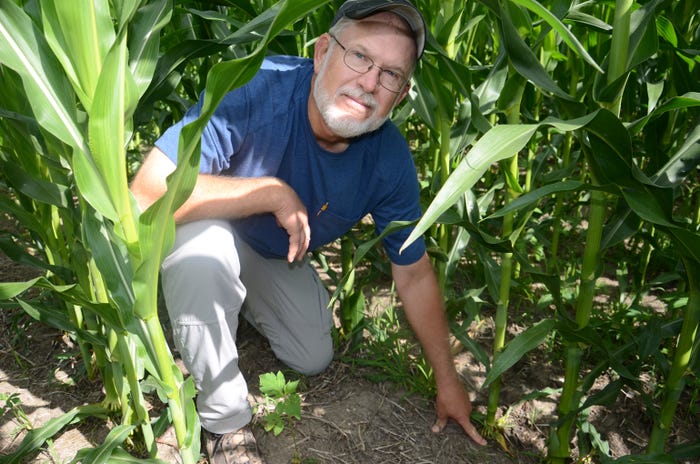
Bob Nielsen and Jim Camberato worked with two farmers doing field-scale research trials on the split application of nitrogen in corn in 2016. Both trials included planned applications of some N later in the season, shortly before tasseling. Nielsen and Camberato have worked with one of the farmers on split-application trials in three previous years.
“That’s not very many trials if you’re trying to draw conclusions and make recommendations,” Nielsen says. “We need many more trials under varying weather conditions before we could get a real handle on whether the practice pays, or when it might pay.”
With that as background, Nielsen addresses questions from Indiana Prairie Farmer related to late-season N application.
IPF: Why is it important to have results from many more trials before you draw conclusions?
Nielsen: The weather is different in various locations each year, and it is different from year to year. These differences in weather conditions can greatly affect how effective late-season planned N applications could be. It was very dry after the late-season application at one farm in 2016. It’s quite likely that affected the application and whether the plants could utilize the N fully. That’s why we must be very careful to point out that the trial results we have so far are based on what happened in one trial at one farm in one given year.
IPF: What would need to happen before you could draw meaningful conclusions?
Nielsen: We would need to work with many more cooperators to do on-farm field trials in different locations. Suppose we could find 10 farmers to let us do a trial with them this year. That would triple the amount of information we have collected on split-application trials so far. It would be great to have enough results from multiple trials so we could make recommendations with confidence, like we can with nitrogen rates. But it took us nearly 10 years to collect data from 250 field-scale N rate trials. With far fewer trials on N timing at the moment, we simply can’t begin to make those kinds of recommendations on split-rate applications now.

NEED MORE TRIALS: Bob Nielsen shows where nitrogen is placed using a Y-Drop. The specialist says much more information is needed before drawing conclusions on late-season N applications.

IPF: What can people do if they would like to participate in a trial?
Nielsen: They can contact me directly, or let their county Extension educator know. We often work closely with the county Extension educator and the farmer on these trials.
IPF: What can you say now about late-season N applications?
Nielsen: I see an advantage in having the high-clearance rigs available so you can make rescue applications late in the season if you feel you need more nitrogen. Research conducted by Camberato and me in the past indicated that when plants are seriously short on N due to early summer N losses or delayed sidedressing, a late-season N application to provide extra N can pay off.
IPF: What about intentionally delaying application of part of the N until later in the season?
Nielsen: That’s a much harder question to answer. If you have the application equipment available and the weather conditions are favorable, you might want to try it. We just don’t have enough information yet on late-season N applications to make any recommendations. We can’t say if or when it might pay, what rates would be best, or what application methods should work best. We can show you the data we have collected, but we need lots of data before we could answer that question with confidence.
Contact Nielsen at [email protected].
About the Author(s)
You May Also Like




